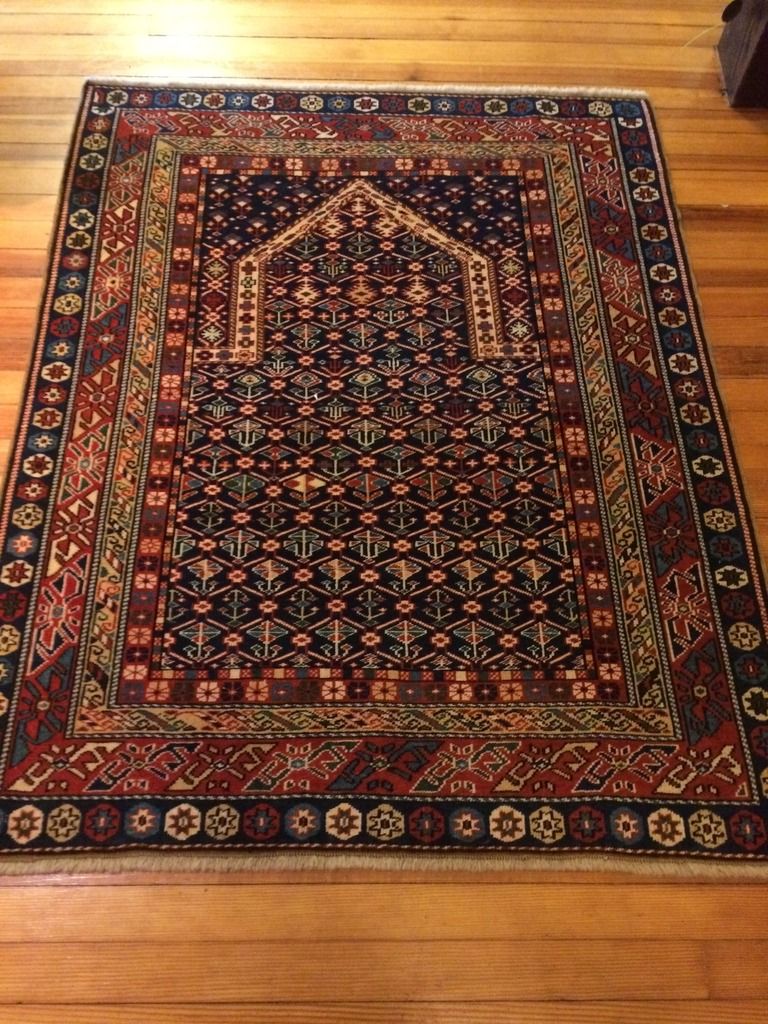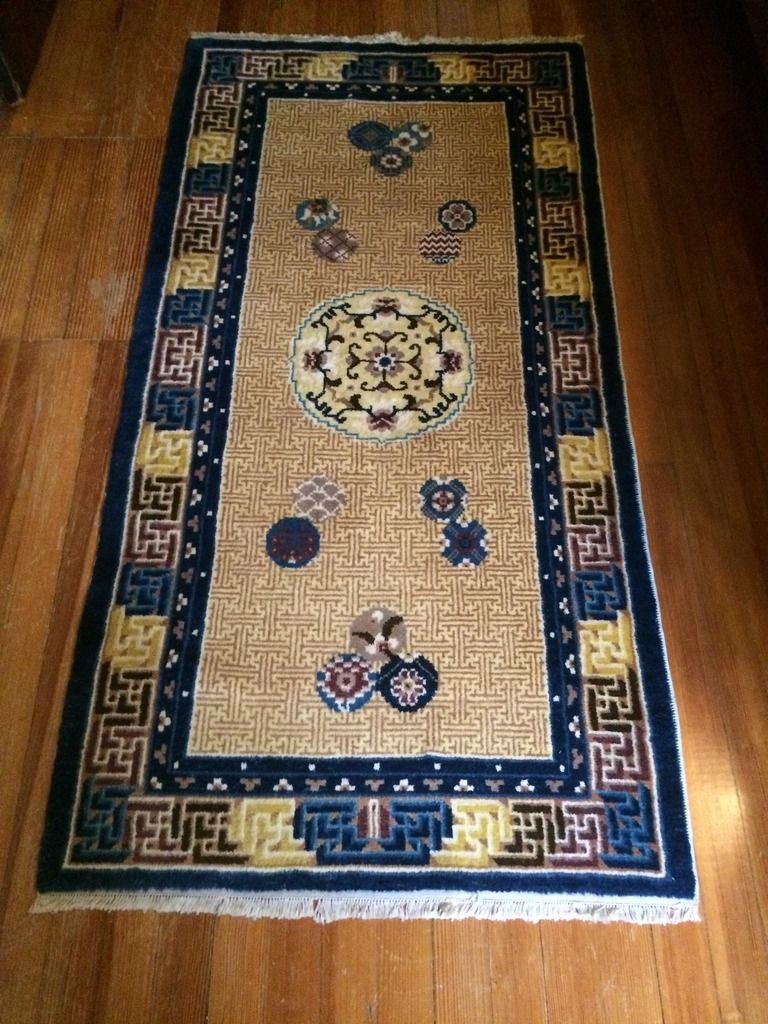This is more a a philosophical post. The question is simple, what constitutes a "real" carpet, a reproduction or a fake...and on a certain level, why do we care?
Let's take this first example. It is a caucasian carpet obviously. Or is it? It is in fact completely modern having been made in Baku only about 10 years ago. So yes, it is from the Caucuses, but it is not likely the weavers have anything in common with the weavers during the "Golden Age" of Caucasian carpets of the Pre-1920s. It has the same vegetal dyes, same design, and honestly, better weave quality than vintage caucasian carpets. So is it a reproduction? To me this would imply that it is a PRECISE copy of something already existing, but I have no evidence that is the case either. Nor was it sold under the pretense of being anything other than modern.So I could not call it a FAKE. So it could be qualified simply as a nice modern rug

Now consider this next rug. Like the first one is also Caucasian in design, and just as good in every way as the previous rug, except that it was made in TURKEY, about 5 years ago. Again, it would be hard to tell this from a 1900's design except that I know it is new.Because it is not geographically from the Caucacus, is it no longer a Caucasian rug? Is it "Faking" at being Caucasian? My feeling, without a lot of logic, is "No", it too is a Caucasian rug. I'm sure others will have differing opinions

And now, yet another prayer carpet. This one is Belouch. And not a very nice one. It's completely modern with synthetic dyes and many many breaks in the warp and weft. Yet. it is actually made by Belouch weavers in Afghanistan. Is it a "belouch"? In this case, I'd say, again, without much logic that it is NOT. Perhaps because in my mind "Belouch" as in "Collectible Belouch" would signify some level of quality that this rug just doesn't have. Where as to the contrary the Turkish carpet above, DEFINITELY has quality in spades. This is dangerous ground of course, because for sure there are many rugs from Iran, Pakistan and elsewhere that have excellent technical and aesthetic qualities, and yet are built to non indigenous designs. So are they fakes? Maybe. How and when these factors cross over in the the realm of "reproduction" or fakery, honestly, I don't exactly have sorted out mentally myself!! I just kind of feel it when I see it so to speak. Which would be the best explanation for me: Genuine= A Certain Feeling.

Now to finally break free of the prayer rugs, Consider one last carpet from Ningxia. It too , was made recently. Actually, it was made in July. And it was made in Ningxia itself, but to an old design, but maybe not quite an exact copy. Does that make it a repro? Or not? In the end, this one I file under
"Who Cares?". It's is really a gorgeous piece and looks great on a the floor where I would have to build a serious business case before putting down a real Ningxia antique.

Your thoughts? What makes a rug real, a repro, a fake, ...or just a great carpet?